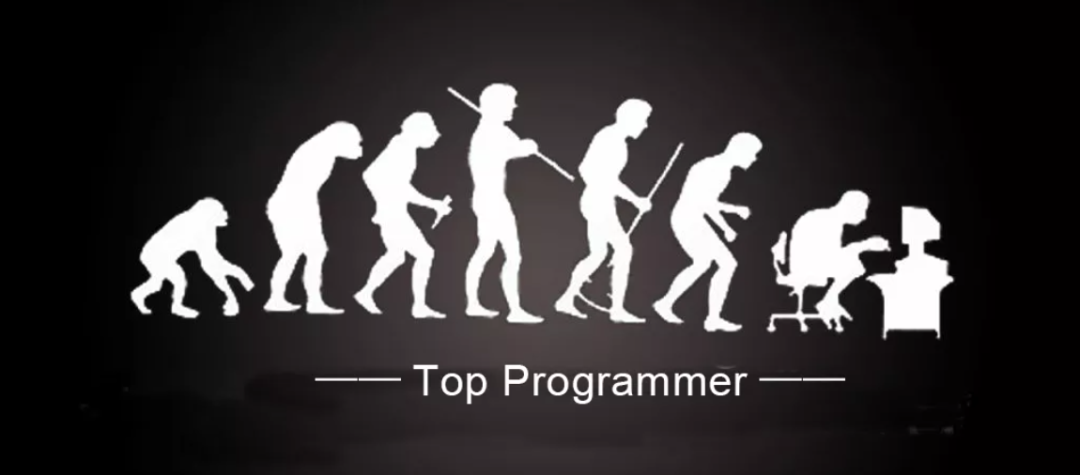异步神器:CompletableFuture实现原理和使用场景

源 / 文/
先送大家一份福利:
《美团技术年货.pdf》(2019-2021)
在2022年春节到来之际,美团技术团队精选过去3年公众号50多篇技术文章以及 20多篇国际顶会论文,整理制作成一本厚达1200多页的电子书,作为新年礼物赠送给大家。
这本电子书内容覆盖算法、前端、后端、数据、安全、测试等多个领域。
希望能对同学们的工作和学习有所帮助。
Code A Better Life

来源:blog.csdn.net/weixin_39332800/article/
details/108185931
1.概述
CompletableFuture是jdk1.8引入的实现类。扩展了Future和CompletionStage,是一个可以在任务完成阶段触发一些操作Future。简单的来讲就是可以实现异步回调。
2.为什么引入CompletableFuture
对于jdk1.5的Future,虽然提供了异步处理任务的能力,但是获取结果的方式很不优雅,还是需要通过阻塞(或者轮训)的方式。如何避免阻塞呢?其实就是注册回调。
业界结合观察者模式实现异步回调。也就是当任务执行完成后去通知观察者。比如Netty的ChannelFuture,可以通过注册监听实现异步结果的处理。
Netty的ChannelFuture
public Promise<V> addListener(GenericFutureListener<? extends Future<? super V>> listener) {
checkNotNull(listener, "listener");
synchronized (this) {
addListener0(listener);
}
if (isDone()) {
notifyListeners();
}
return this;
}
private boolean setValue0(Object objResult) {
if (RESULT_UPDATER.compareAndSet(this, null, objResult) ||
RESULT_UPDATER.compareAndSet(this, UNCANCELLABLE, objResult)) {
if (checkNotifyWaiters()) {
notifyListeners();
}
return true;
}
return false;
}
通过addListener方法注册监听。如果任务完成,会调用notifyListeners通知。
CompletableFuture通过扩展Future,引入函数式编程,通过回调的方式去处理结果。
3.功能
CompletableFuture的功能主要体现在他的CompletionStage。
可以实现如下等功能
转换(thenCompose)
组合(thenCombine)
消费(thenAccept)
运行(thenRun)。
带返回的消费(thenApply)
消费和运行的区别:
消费使用执行结果。运行则只是运行特定任务。具体其他功能大家可以根据需求自行查看。
CompletableFuture借助CompletionStage的方法可以实现链式调用。并且可以选择同步或者异步两种方式。
这里举个简单的例子来体验一下他的功能。
public static void thenApply() {
ExecutorService executorService = Executors.newFixedThreadPool(2);
CompletableFuture cf = CompletableFuture.supplyAsync(() -> {
try {
// Thread.sleep(2000);
} catch (Exception e) {
e.printStackTrace();
}
System.out.println("supplyAsync " + Thread.currentThread().getName());
return "hello";
}, executorService).thenApplyAsync(s -> {
System.out.println(s + "world");
return "hhh";
}, executorService);
cf.thenRunAsync(() -> {
System.out.println("ddddd");
});
cf.thenRun(() -> {
System.out.println("ddddsd");
});
cf.thenRun(() -> {
System.out.println(Thread.currentThread());
System.out.println("dddaewdd");
});
}
执行结果
supplyAsync pool-1-thread-1
helloworld
ddddd
ddddsd
Thread[main,5,main]
dddaewdd
根据结果我们可以看到会有序执行对应任务。
注意:
如果是同步执行cf.thenRun。他的执行线程可能main线程,也可能是执行源任务的线程。如果执行源任务的线程在main调用之前执行完了任务。那么cf.thenRun方法会由main线程调用。
这里说明一下,如果是同一任务的依赖任务有多个:
如果这些依赖任务都是同步执行。那么假如这些任务被当前调用线程(main)执行,则是有序执行,假如被执行源任务的线程执行,那么会是倒序执行。因为内部任务数据结构为LIFO。
如果这些依赖任务都是异步执行,那么他会通过异步线程池去执行任务。不能保证任务的执行顺序。
上面的结论是通过阅读源代码得到的。下面我们深入源代码。
4.源码追踪
创建CompletableFuture
创建的方法有很多,甚至可以直接new一个。我们来看一下supplyAsync异步创建的方法。
public static <U> CompletableFuture<U> supplyAsync(Supplier<U> supplier,
Executor executor) {
return asyncSupplyStage(screenExecutor(executor), supplier);
}
static Executor screenExecutor(Executor e) {
if (!useCommonPool && e == ForkJoinPool.commonPool())
return asyncPool;
if (e == null) throw new NullPointerException();
return e;
}
入参Supplier,带返回值的函数。如果是异步方法,并且传递了执行器,那么会使用传入的执行器去执行任务。否则采用公共的ForkJoin并行线程池,如果不支持并行,新建一个线程去执行。
这里我们需要注意ForkJoin是通过守护线程去执行任务的。所以必须有非守护线程的存在才行。
asyncSupplyStage方法
static <U> CompletableFuture<U> asyncSupplyStage(Executor e,
Supplier<U> f) {
if (f == null) throw new NullPointerException();
CompletableFuture<U> d = new CompletableFuture<U>();
e.execute(new AsyncSupply<U>(d, f));
return d;
}
这里会创建一个用于返回的CompletableFuture。
然后构造一个AsyncSupply,并将创建的CompletableFuture作为构造参数传入。
那么,任务的执行完全依赖AsyncSupply。
AsyncSupply#run
public void run() {
CompletableFuture<T> d; Supplier<T> f;
if ((d = dep) != null && (f = fn) != null) {
dep = null; fn = null;
if (d.result == null) {
try {
d.completeValue(f.get());
} catch (Throwable ex) {
d.completeThrowable(ex);
}
}
d.postComplete();
}
}
该方法会调用Supplier的get方法。并将结果设置到CompletableFuture中。我们应该清楚这些操作都是在异步线程中调用的。
d.postComplete方法就是通知任务执行完成。触发后续依赖任务的执行,也就是实现CompletionStage的关键点。
在看postComplete方法之前我们先来看一下创建依赖任务的逻辑。
thenAcceptAsync方法
public CompletableFuture<Void> thenAcceptAsync(Consumer<? super T> action) {
return uniAcceptStage(asyncPool, action);
}
private CompletableFuture<Void> uniAcceptStage(Executor e,
Consumer<? super T> f) {
if (f == null) throw new NullPointerException();
CompletableFuture<Void> d = new CompletableFuture<Void>();
if (e != null || !d.uniAccept(this, f, null)) {
# 1
UniAccept<T> c = new UniAccept<T>(e, d, this, f);
push(c);
c.tryFire(SYNC);
}
return d;
}
上面提到过。thenAcceptAsync是用来消费CompletableFuture的。该方法调用uniAcceptStage。
uniAcceptStage逻辑:
构造一个CompletableFuture,主要是为了链式调用。
如果为异步任务,直接返回。因为源任务结束后会触发异步线程执行对应逻辑。
如果为同步任务(e==null),会调用d.uniAccept方法。这个方法在这里逻辑:如果源任务完成,调用f,返回true。否则进入if代码块(Mark 1)。
如果是异步任务直接进入if(Mark 1)。
Mark1逻辑:
构造一个UniAccept,将其push入栈。这里通过CAS实现乐观锁实现。
调用c.tryFire方法。
final CompletableFuture<Void> tryFire(int mode) {
CompletableFuture<Void> d; CompletableFuture<T> a;
if ((d = dep) == null ||
!d.uniAccept(a = src, fn, mode > 0 ? null : this))
return null;
dep = null; src = null; fn = null;
return d.postFire(a, mode);
}
会调用d.uniAccept方法。其实该方法判断源任务是否完成,如果完成则执行依赖任务,否则返回false。
如果依赖任务已经执行,调用d.postFire,主要就是Fire的后续处理。根据不同模式逻辑不同。
这里简单说一下,其实mode有同步异步,和迭代。迭代为了避免无限递归。
这里强调一下d.uniAccept方法的第三个参数。
如果是异步调用(mode>0),传入null。否则传入this。
区别看下面代码。c不为null会调用c.claim方法。
try {
if (c != null && !c.claim())
return false;
@SuppressWarnings("unchecked") S s = (S) r;
f.accept(s);
completeNull();
} catch (Throwable ex) {
completeThrowable(ex);
}
final boolean claim() {
Executor e = executor;
if (compareAndSetForkJoinTaskTag((short)0, (short)1)) {
if (e == null)
return true;
executor = null; // disable
e.execute(this);
}
return false;
}
claim方法是逻辑:
如果异步线程为null。说明同步,那么直接返回true。最后上层函数会调用f.accept(s)同步执行任务。
如果异步线程不为null,那么使用异步线程去执行this。
this的run任务如下。也就是在异步线程同步调用tryFire方法。达到其被异步线程执行的目的。
public final void run(){
tryFire(ASYNC);
}
看完上面的逻辑,我们基本理解依赖任务的逻辑。
其实就是先判断源任务是否完成,如果完成,直接在对应线程执行以来任务(如果是同步,则在当前线程处理,否则在异步线程处理)
如果任务没有完成,直接返回,因为等任务完成之后会通过postComplete去触发调用依赖任务。
postComplete方法
final void postComplete() {
/*
* On each step, variable f holds current dependents to pop
* and run. It is extended along only one path at a time,
* pushing others to avoid unbounded recursion.
*/
CompletableFuture<?> f = this; Completion h;
while ((h = f.stack) != null ||
(f != this && (h = (f = this).stack) != null)) {
CompletableFuture<?> d; Completion t;
if (f.casStack(h, t = h.next)) {
if (t != null) {
if (f != this) {
pushStack(h);
continue;
}
h.next = null; // detach
}
f = (d = h.tryFire(NESTED)) == null ? this : d;
}
}
}
在源任务完成之后会调用。
其实逻辑很简单,就是迭代堆栈的依赖任务。调用h.tryFire方法。NESTED就是为了避免递归死循环。因为FirePost会调用postComplete。如果是NESTED,则不调用。
堆栈的内容其实就是在依赖任务创建的时候加入进去的。上面我们已经提到过。
4.总结
基本上述源码已经分析了逻辑。
因为涉及异步等操作,我们需要理一下(这里针对全异步任务):
创建CompletableFuture成功之后会通过异步线程去执行对应任务。
如果CompletableFuture还有依赖任务(异步),会将任务加入到CompletableFuture的堆栈保存起来。以供后续完成后执行依赖任务。
当然,创建依赖任务并不只是将其加入堆栈。如果源任务在创建依赖任务的时候已经执行完成,那么当前线程会触发依赖任务的异步线程直接处理依赖任务。并且会告诉堆栈其他的依赖任务源任务已经完成。
主要是考虑代码的复用。所以逻辑相对难理解。
postComplete方法会被源任务线程执行完源任务后调用。同样也可能被依赖任务线程后调用。
执行依赖任务的方法主要就是靠tryFire方法。因为这个方法可能会被多种不同类型线程触发,所以逻辑也绕一点。(其他依赖任务线程、源任务线程、当前依赖任务线程)
如果是当前依赖任务线程,那么会执行依赖任务,并且会通知其他依赖任务。
如果是源任务线程,和其他依赖任务线程,则将任务转换给依赖线程去执行。不需要通知其他依赖任务,避免死递归。
不得不说Doug Lea的编码,真的是艺术。代码的复用性全体现在逻辑上了。
end

顶级程序员:topcoding
做最好的程序员社区:Java后端开发、Python、大数据、AI
一键三连「分享」、「点赞」和「在看」
